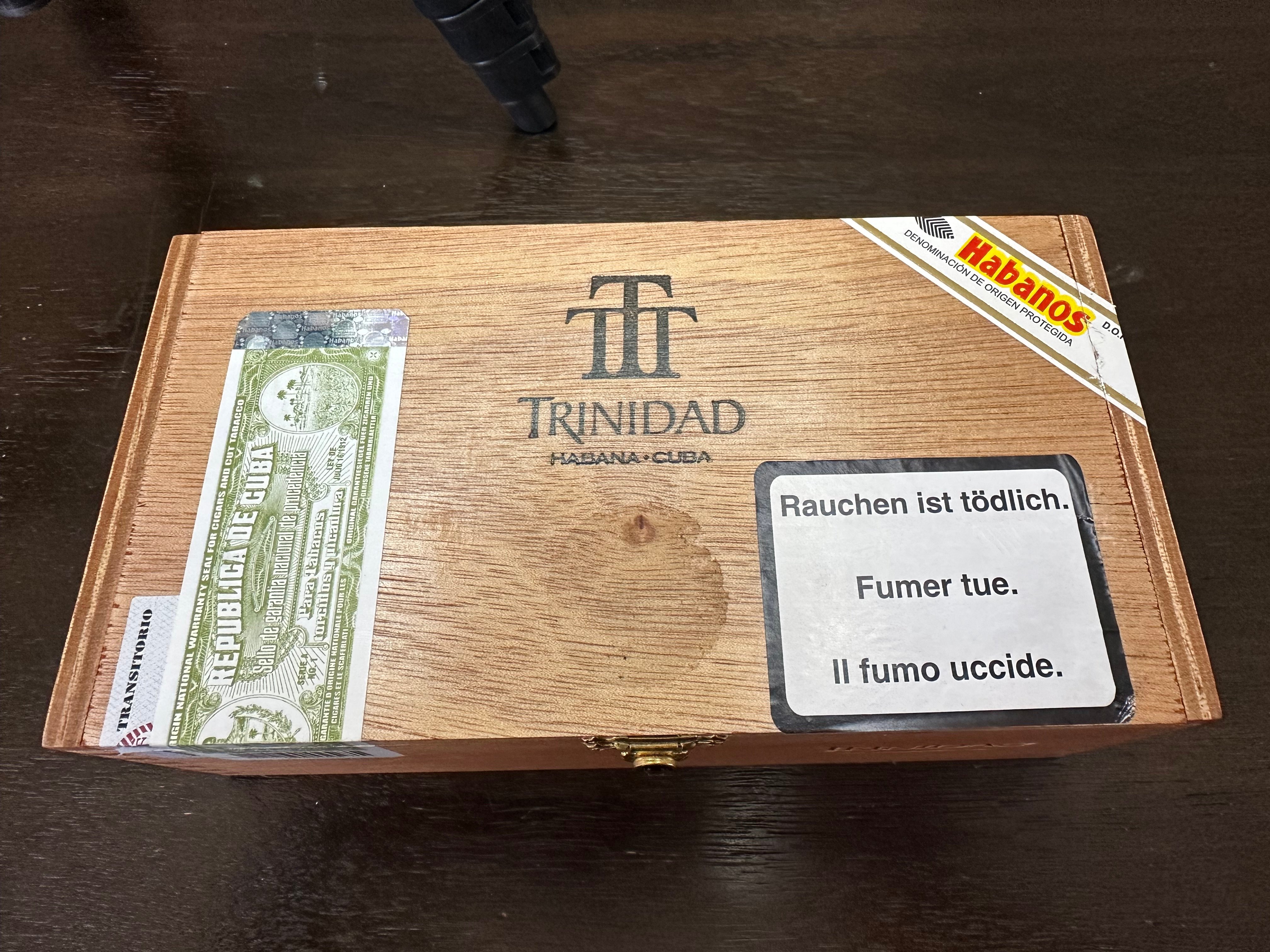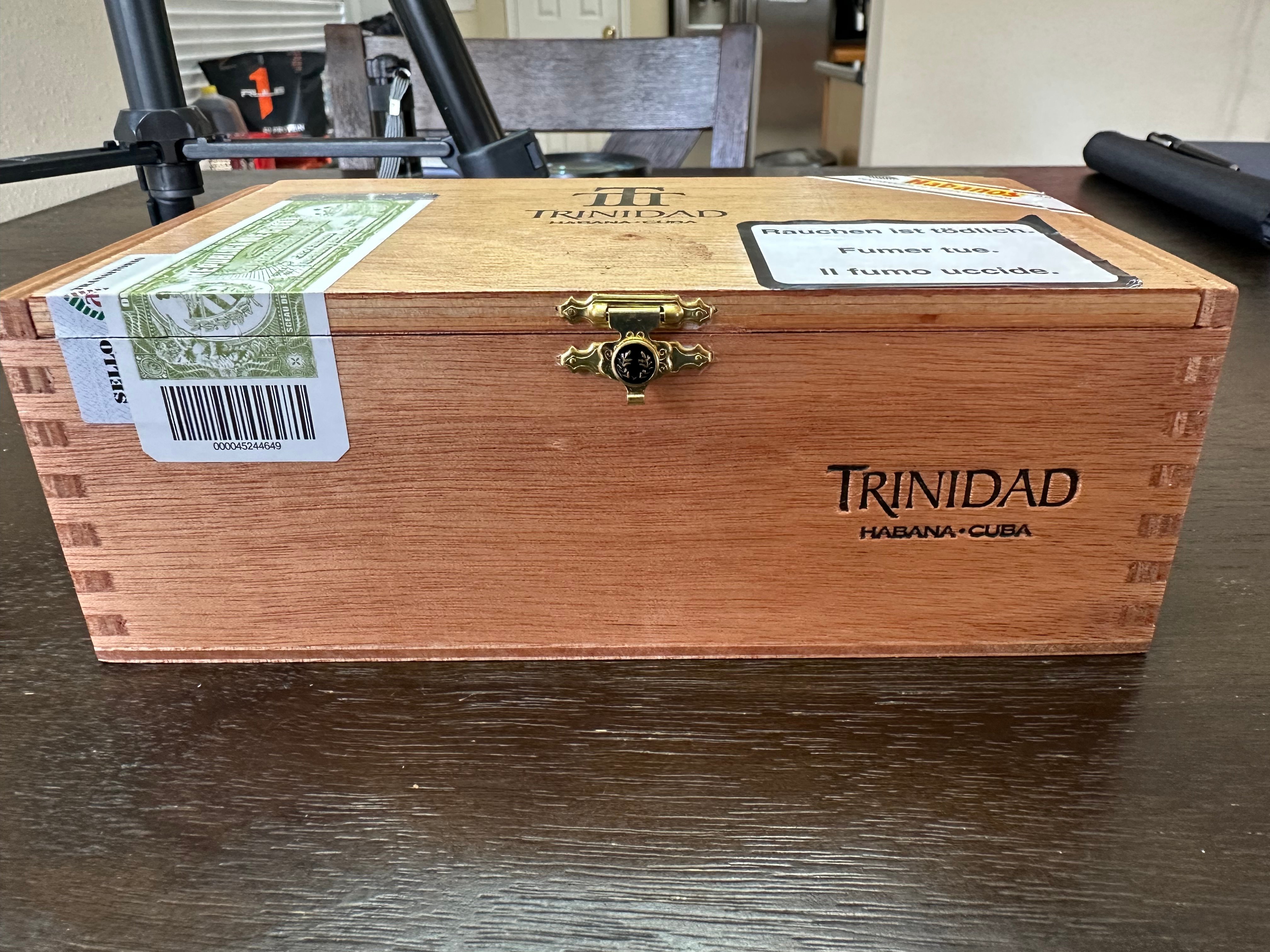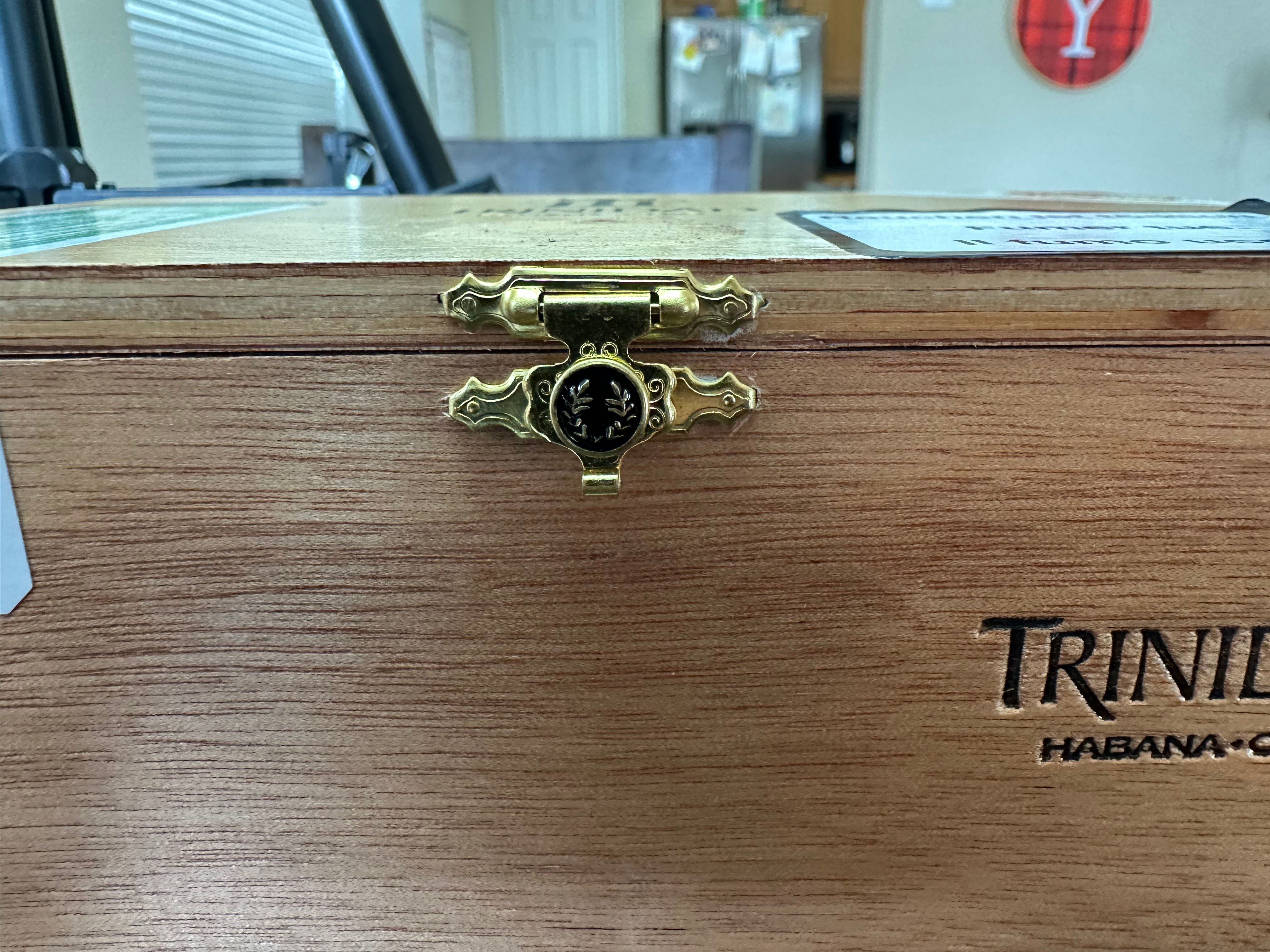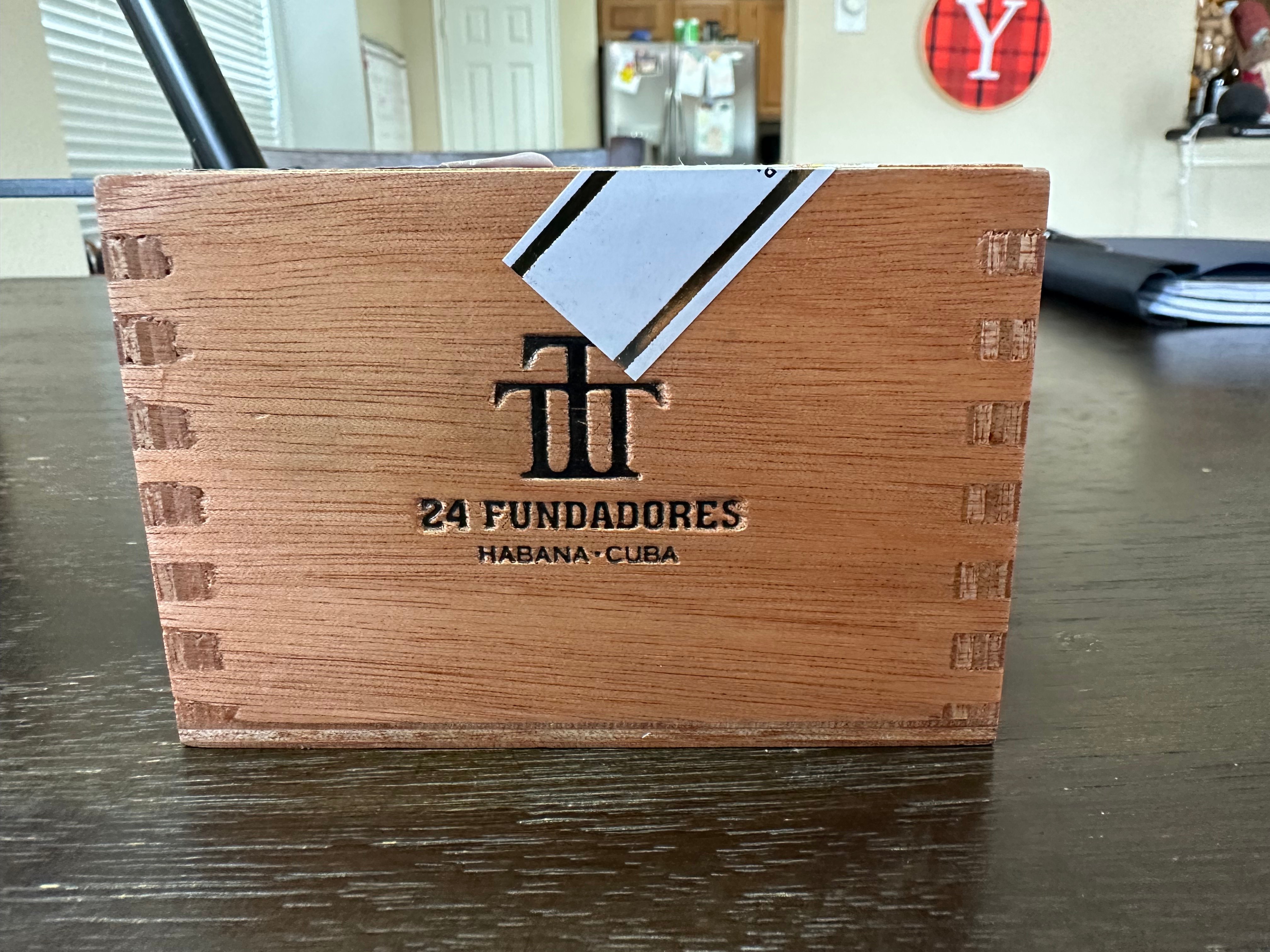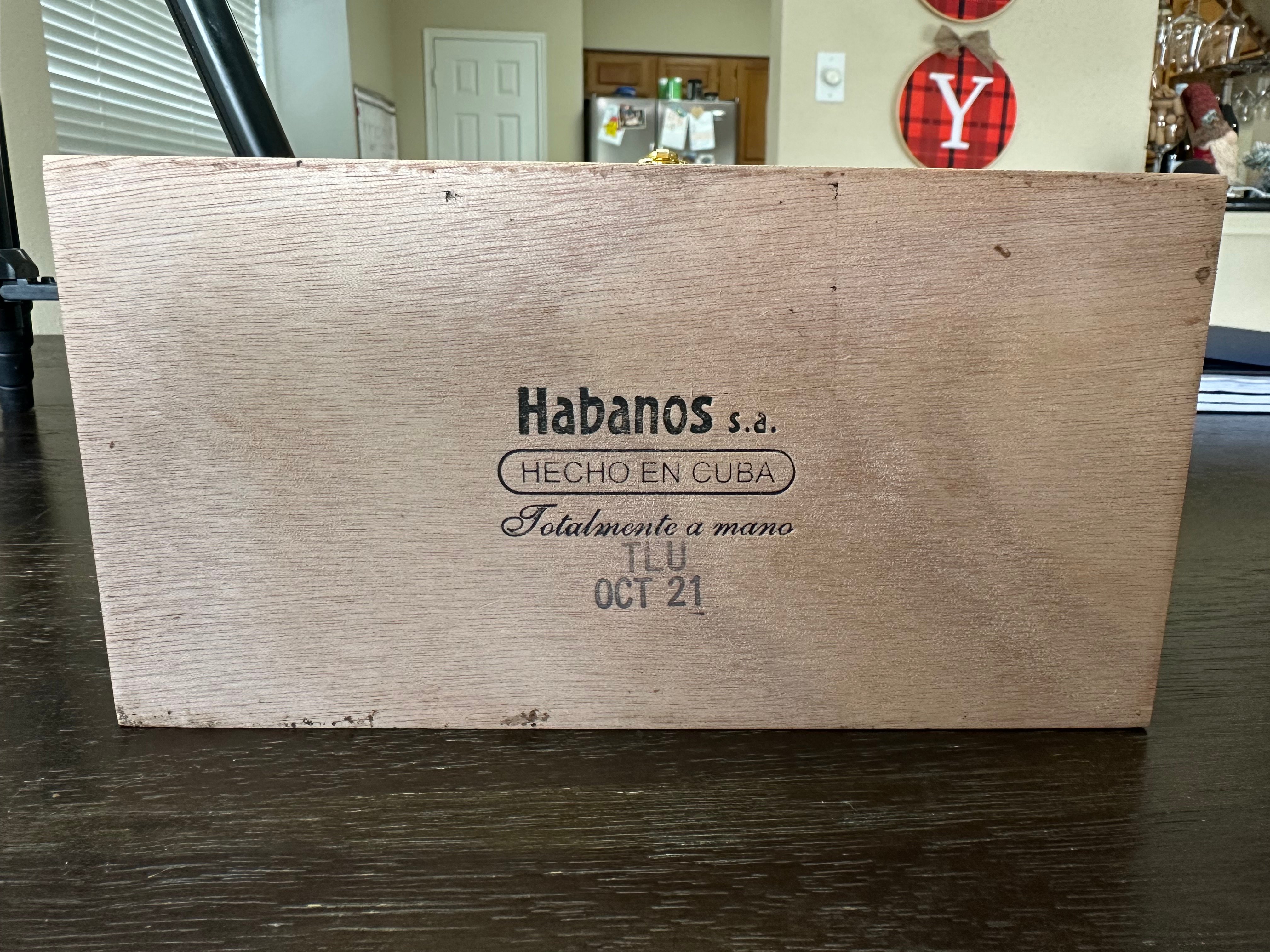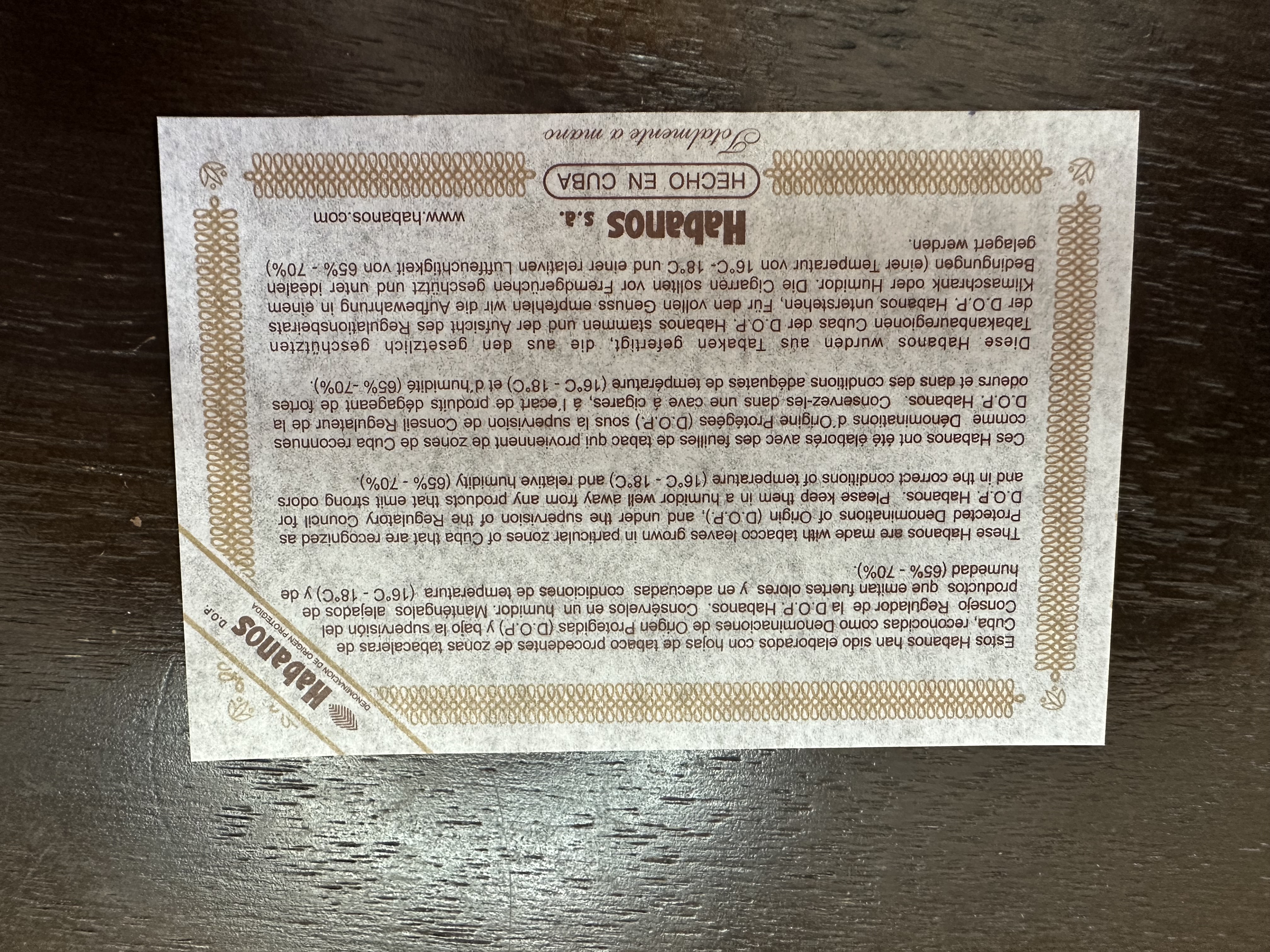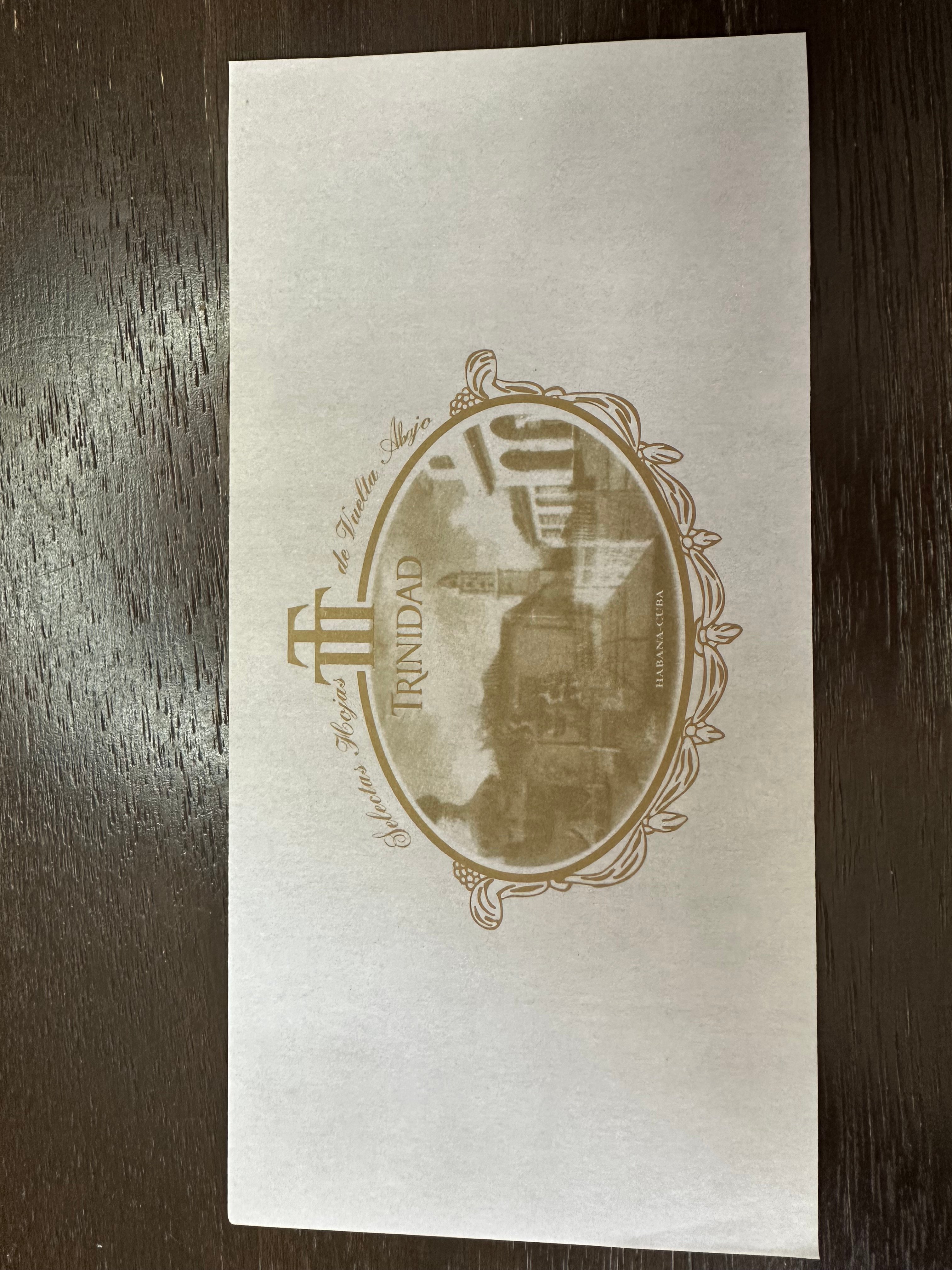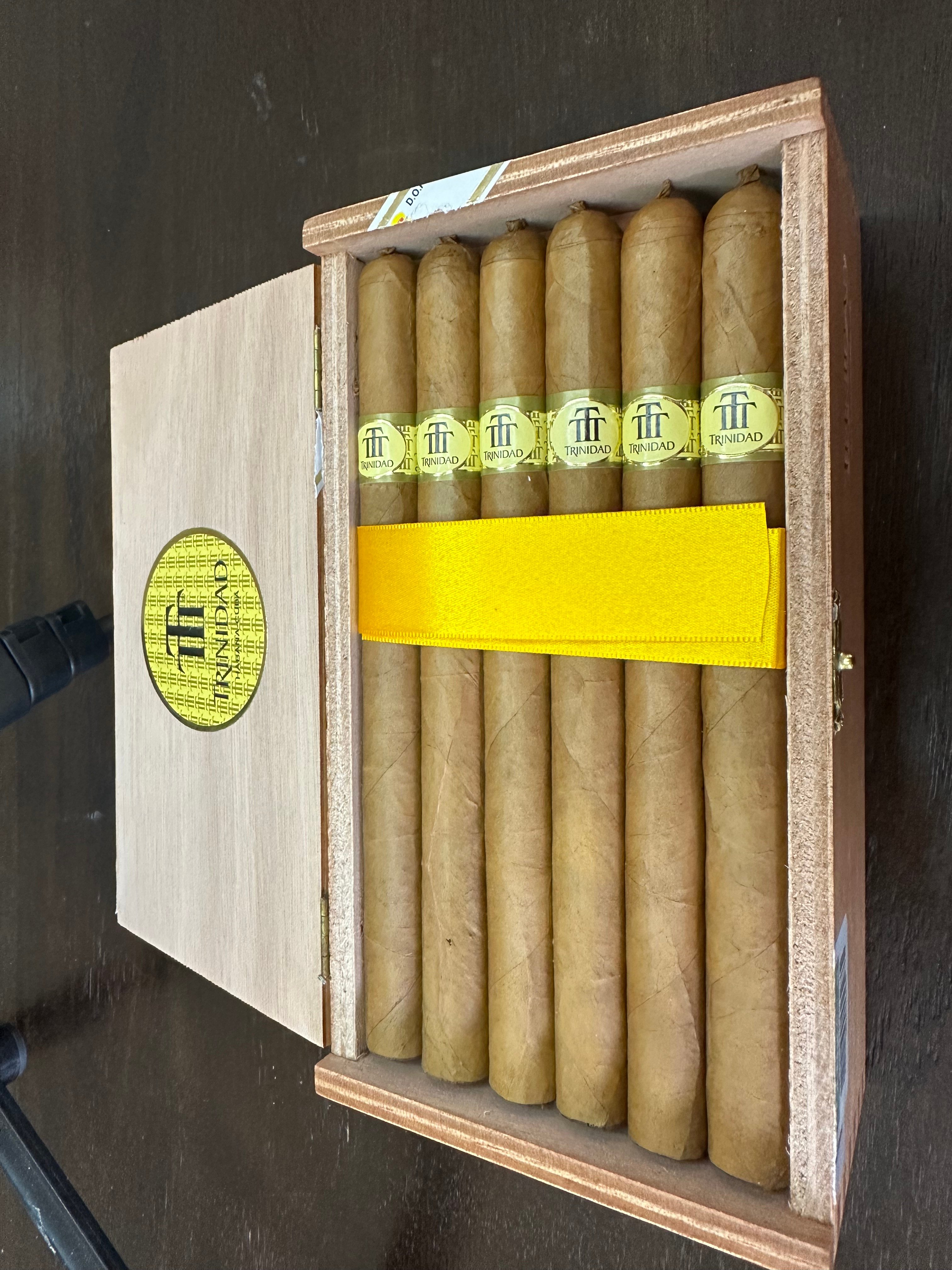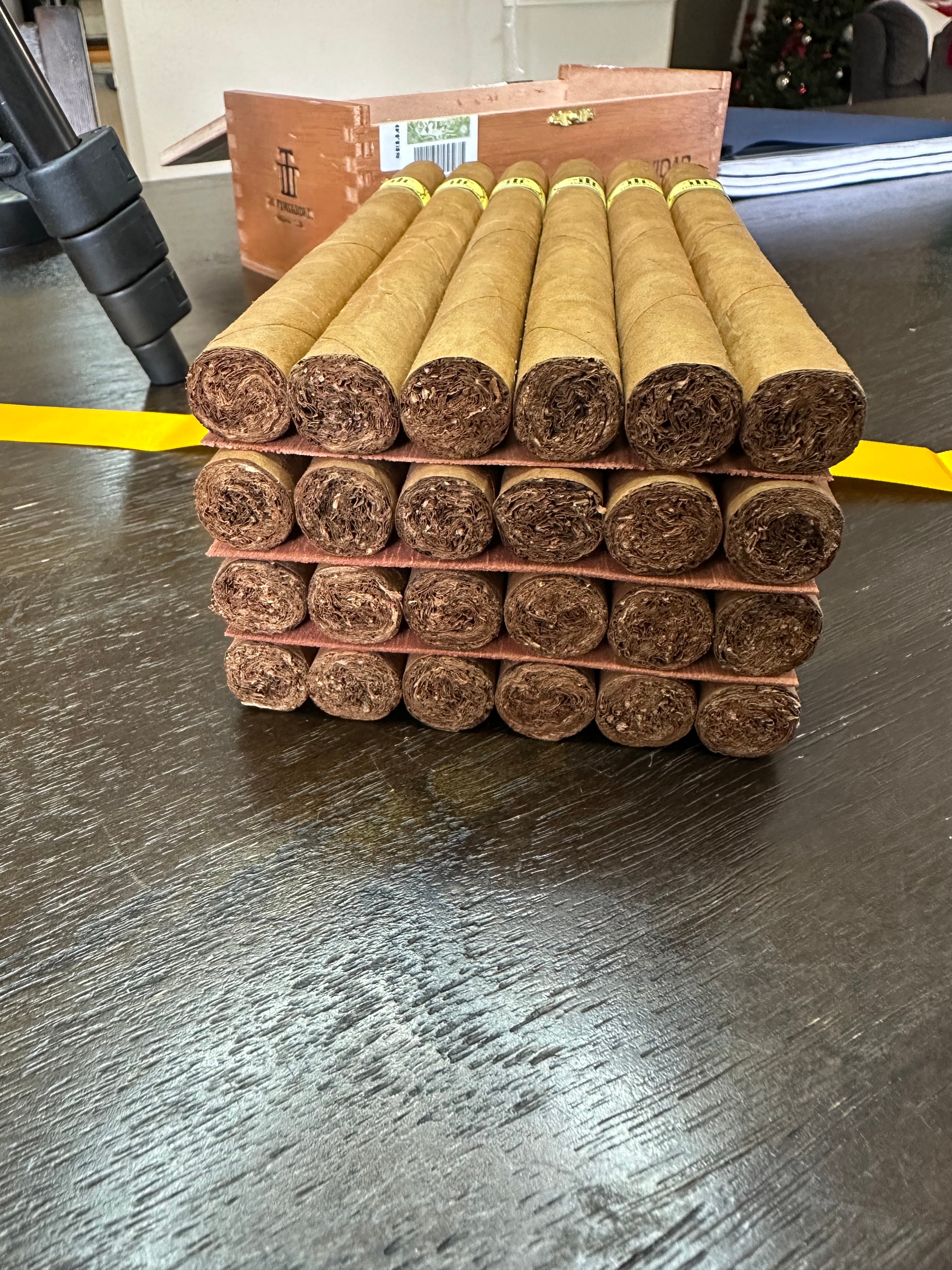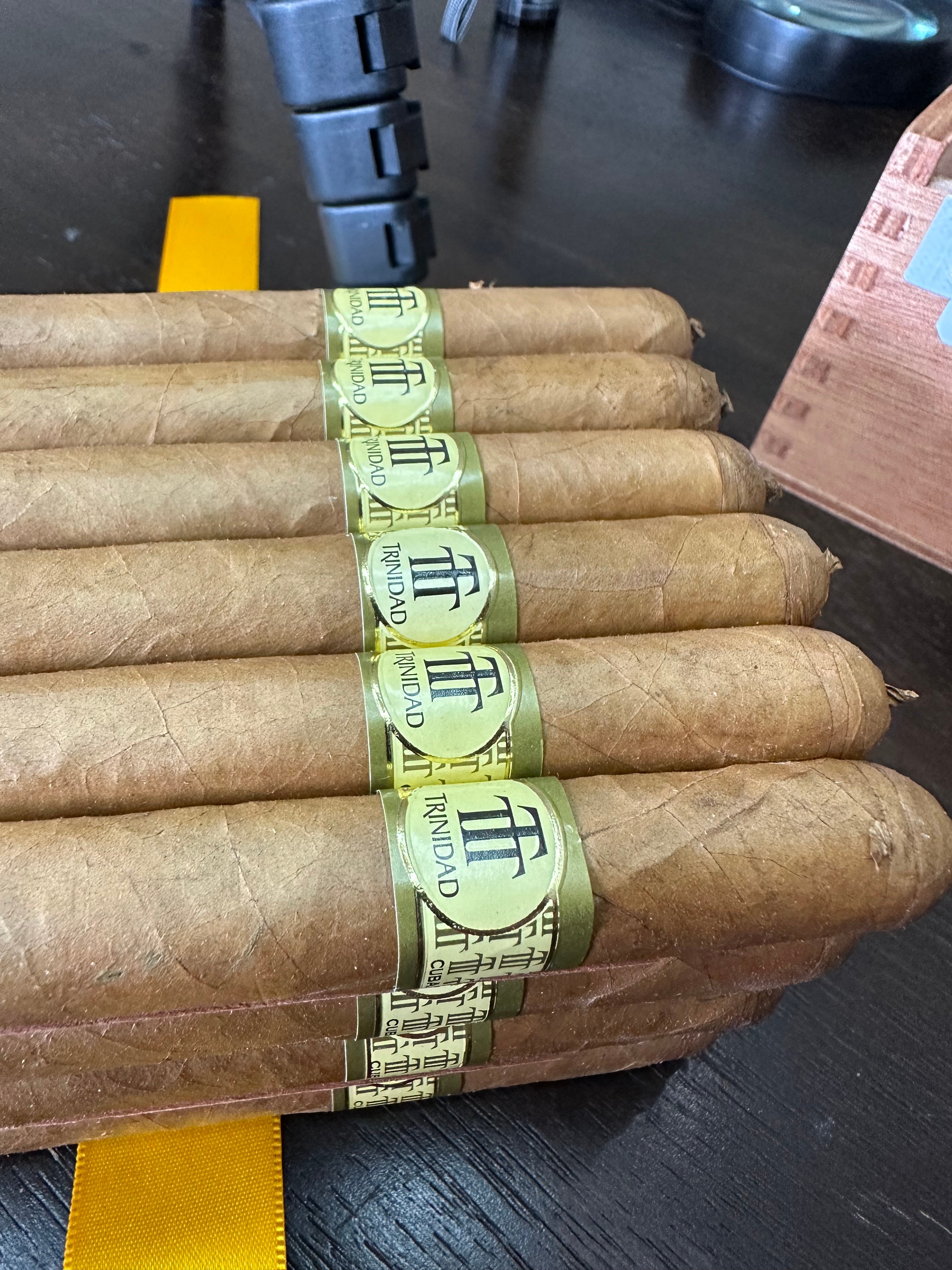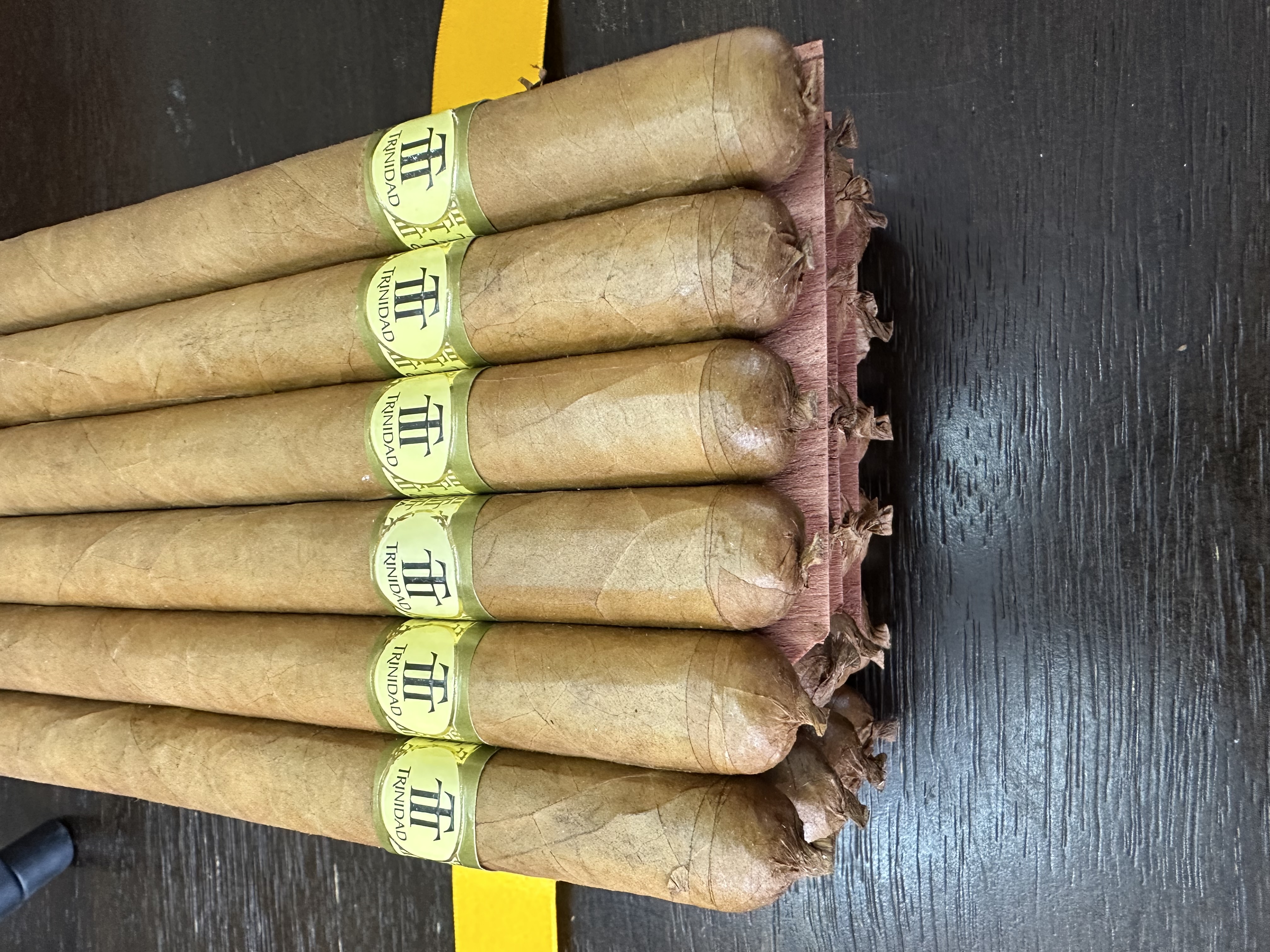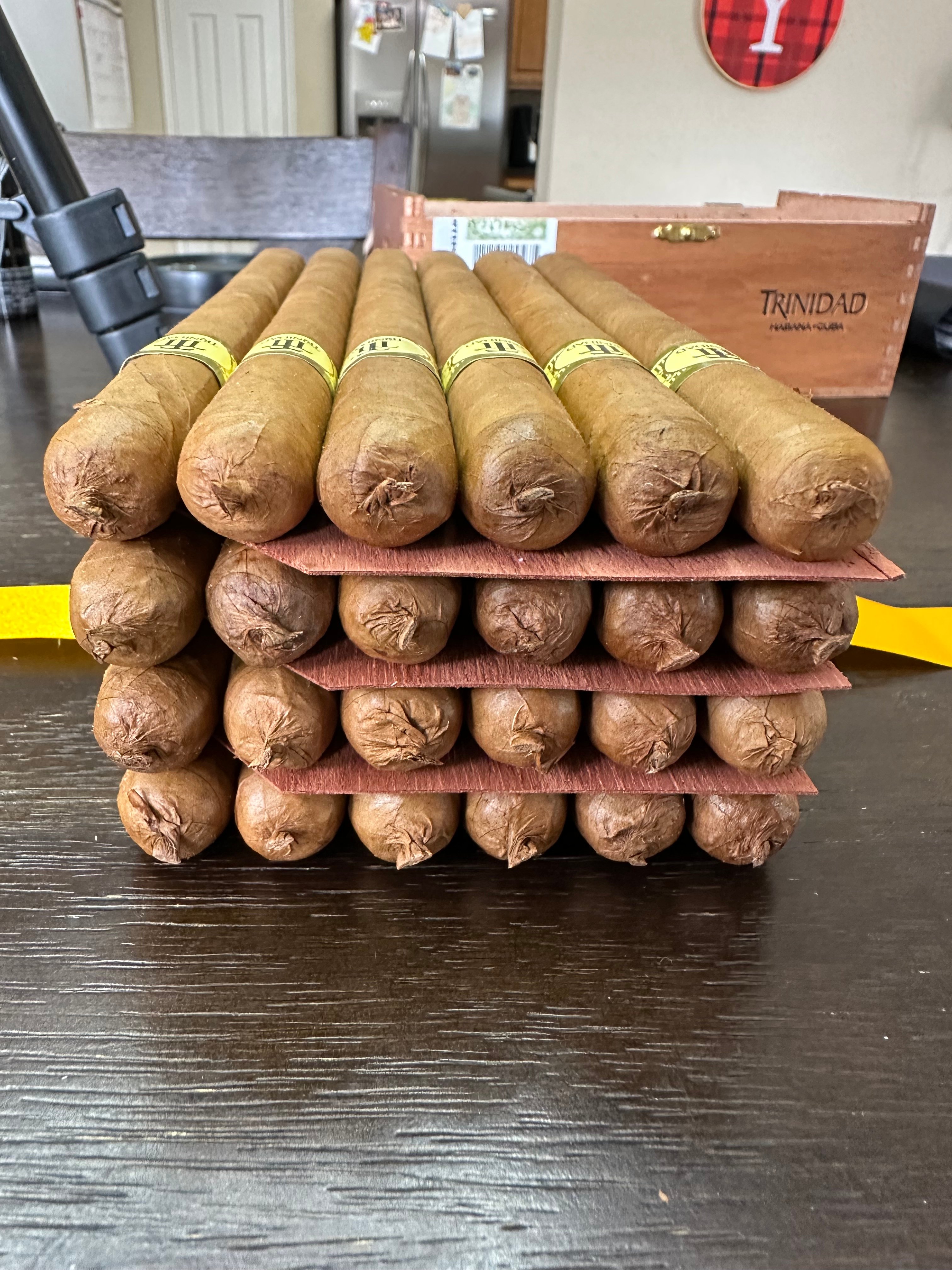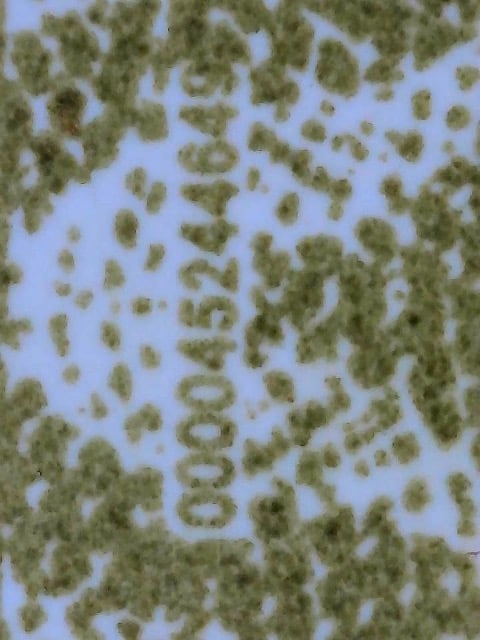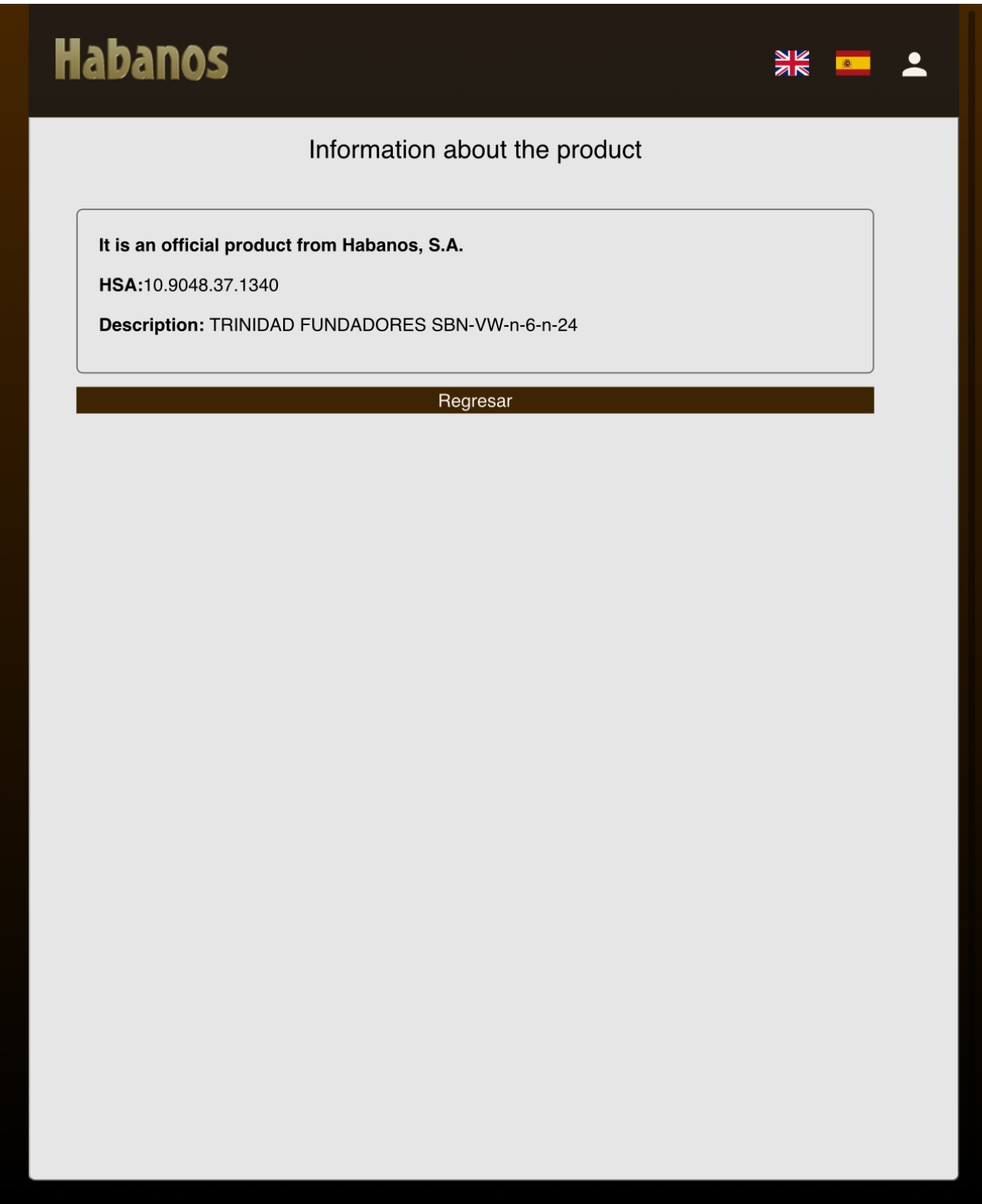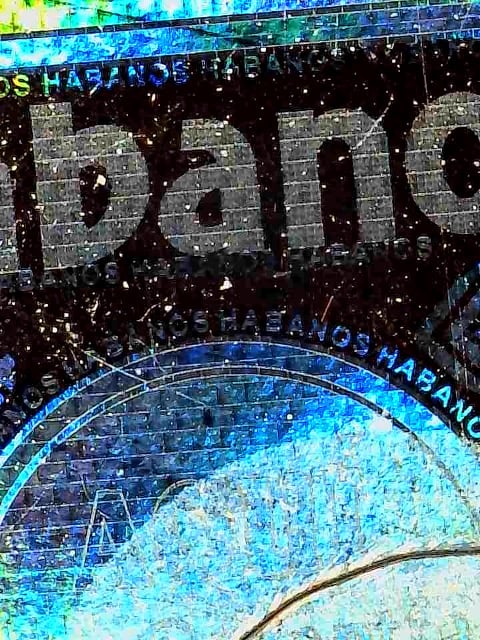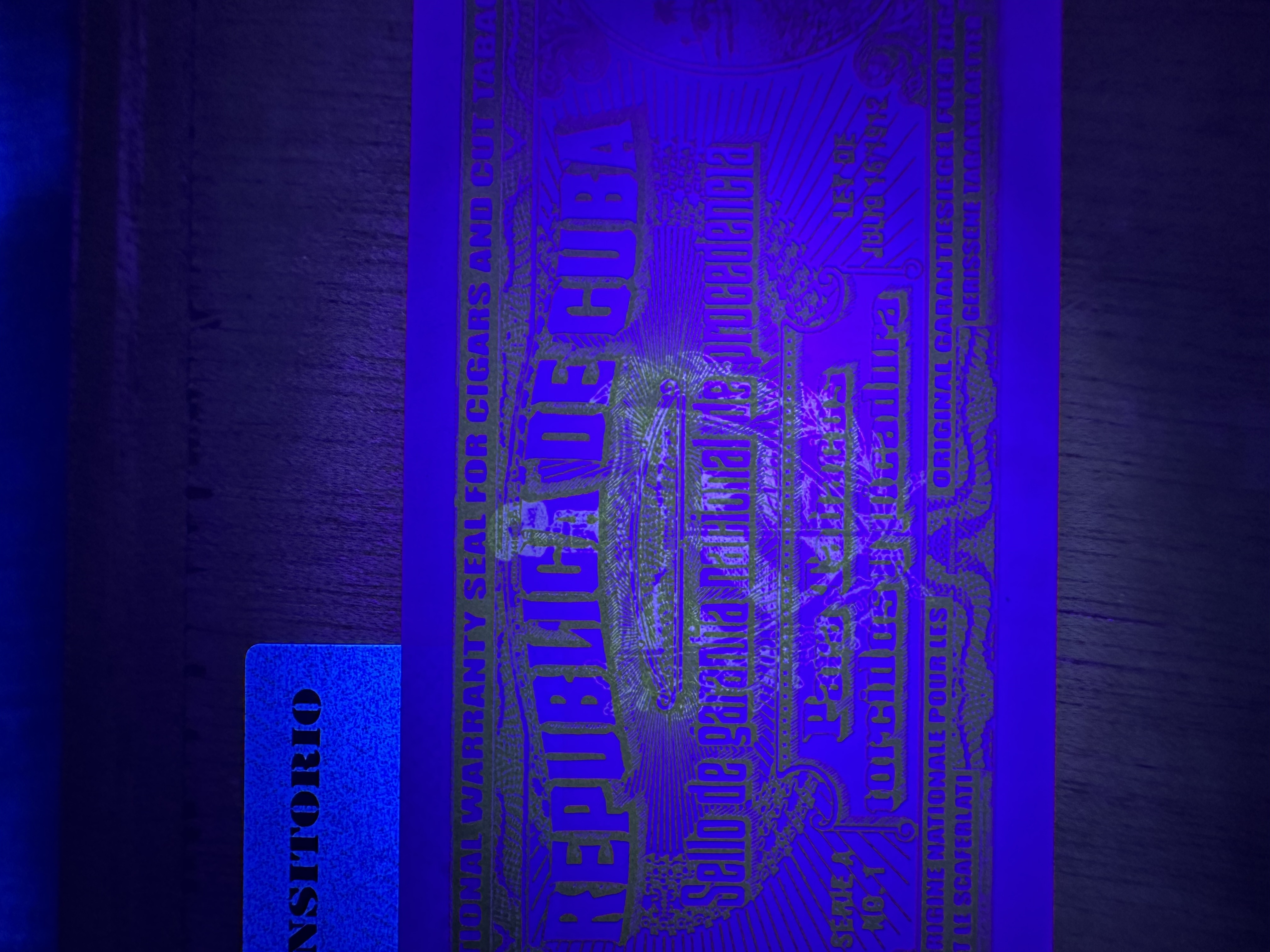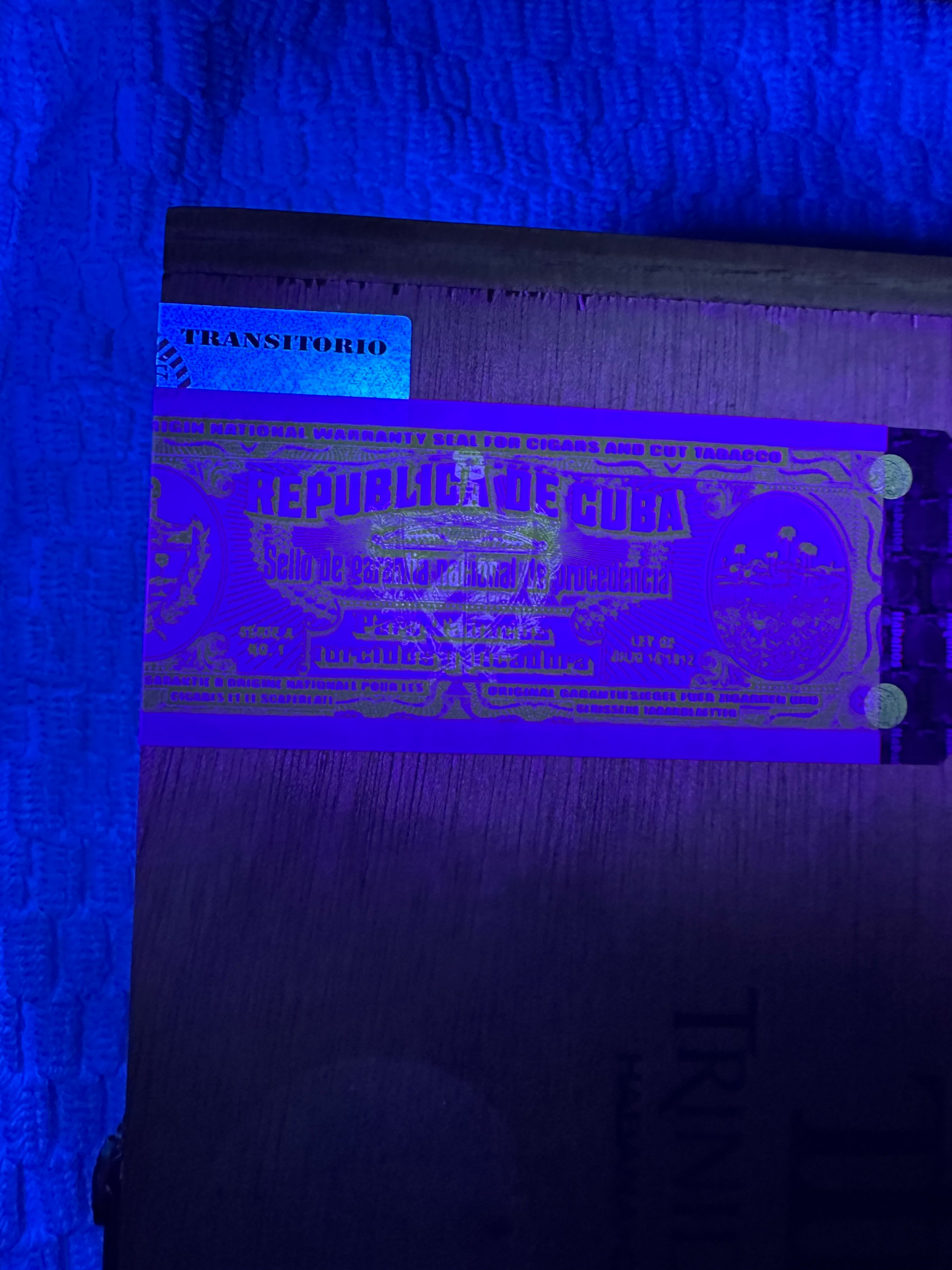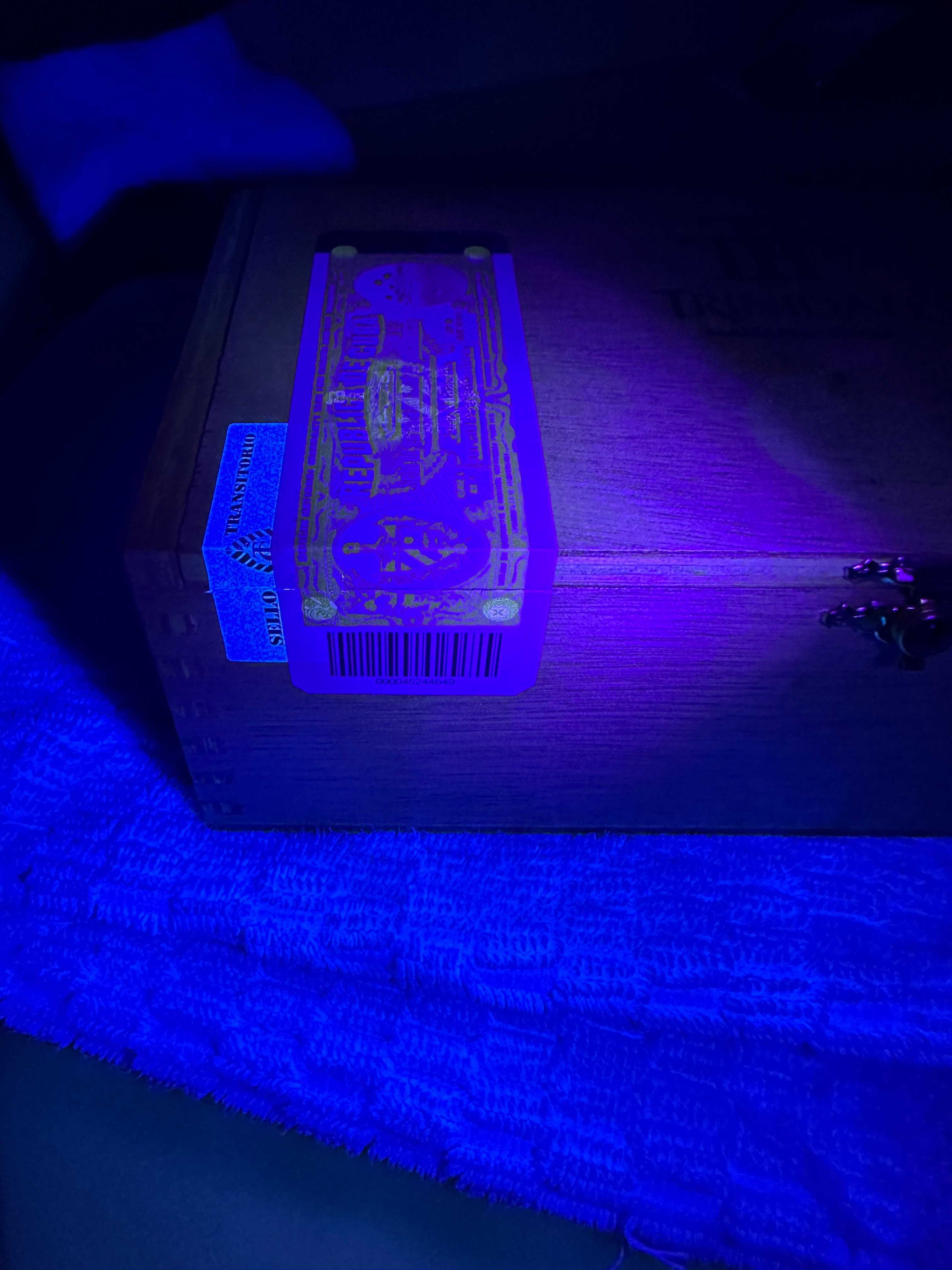Search the Community
Showing results for tags 'Genuine cigar'.
-
I apologize if I posted this in the wrong section. I purchased this box online from a retailer my friend has used for many years and swears by them. Everything checks out to my untrained eye but I’m weary trusting a new vendor. What are your thoughts? I tried to remove the health warning label and damaged an authenticity sticker that was above the clasp on the lid. That’s what the adhesive circle is from.
- 9 replies
-
- fake cigars
- genuine cigar
-
(and 1 more)
Tagged with:
-
Is this a Genuine Cuban Cigar? How many times has this question been asked in a forum? Unfortunately, forums are full of well-intentioned advice, which (regrettably) is often wrong and is invariably incomplete, and therefore misleading. Let me be clear: There is no single or simple way to prove a cigar is genuine. Luckily there are ways to prove that a cigar is or may be a fake. Some are definitive and some are indicative. Enough negative indications should be sufficient to raise reasonable doubts. One needs to develop an understanding as to what is a fake cigar, what cigars are faked, who fakes cigars, how fake cigars are sold, as well as specific aspects of the cigar to check. Please note that in this context “cigar” extends to packaging as well as the cigar itself. Part 1 - General Considerations What is a Fake? A fake is anything made to appear other than it actually is, and is intended to be passed off fraudulently or deceptively as genuine. Cigars that may be genuine but mistaken as fakes are: special factory productions, factory trials, pre-production cigars, etc. There are good fakes and there are bad fakes. There are professionally made fakes, fakes by amateurs, and fakes unintentionally being passed on by uninformed persons. The Official Distribution Chain Understanding how the official distribution system works gives an insight to how Black Market cigars can enter the distribution chain.Habanos SA grants single licences on a region by region basis. Regional Licence Holders either have their own local distribution offices and/or sell direct to sub-distributors.The Local Offices sell to sub-distributors and major retailers. Sub-distributors may have retail sales and/or wholesale to smaller the retailers (tobacconists, bars, clubs, liquor outlets, etc.). Retailers can purchase from distributors, sub-distributors, parallel importers, parallel import themselves, or use a combination of all sources. Parallel Market Suppliers Parallel suppliers are either legitimate suppliers selling outside their region; or they may be professionally Black Marketeers posing as a parallel supplier. Sub distributors sell product into the grey market to increase their own volume turnover, as the more stock they sell, the better discount they can get from their distributor.Transactions, communications, and payment are done through third party companies so that nothing can be traced directly back to the distributor/sub-distributor from where the cigars originated.Many retailers purchase from both licensed and parallel supply sources. Theoretically there is nothing wrong with parallel importing (other than being unauthorised), but it does depend on the knowledge and scruples of the parties involved. Purchasing from a parallel supplier is generally cheaper, however there are two downsides: the possibility of fakes and there are no wholesale-level returns, and therefore no quality control. The Black Market The Black Market is basically professional criminal operations, generally originating from Central America, Cuba and Asia. These operations involve massive quantities of fake cigars. They either sell into the grey market, passing themselves off as legitimate parallel suppliers, or they sell direct to the final point-of-sale sellers....stores, bars, clubs, street touts, cruise lines, US vacation destinations, etc. The Grey Market The Grey Market is the retail level sellers who have purchased stock from Parallel Market Suppliers.Some world renowned retailers have been caught selling fakes (notably Limited Editions). When pressed they admitted that they purchased the cigars outside of the licensed distribution channel, however Grey Market in itself is not an indication of fakes.Habanos SA is currently trying to eliminate the grey market. The introduction of the new warranty seal (c2010) is one measure employed to enforce this. Some Grey Market vendors remove this barcode so that the product cannot be traced back to the distributor selling outside his region. Without this barcode, it is impossible to utilise the Habanos SA website to verify the authenticity of the product.Buyers should always use caution with buying from an unknown grey market dealer. What Cuban cigars are faked? All cigars can and are being faked and can be categorised as follows: Fake cigars in fake packaging (total fakes) Fake cigars in genuine packaging (replacement fakes) Genuine cigars with fake bands in genuine or fake packaging (upgrade fakes) Fake Cigars can be non-Cuban cigars or cheap local Cuban cigars (handmade but normally with short-filler tobacco scraps). They may or may not be to the correct size, and are sometimes sold with a totally bogus cigar or release name. Fake or upgraded cigars can also be genuine Cuban cigars with stolen or fake bands purporting to be an exclusive valuable cigar. Fake Packaging includes genuine boxes (either stolen in large numbers or a reused genuine box), be counterfeits of genuine boxes, or totally bogus boxes (for example the “classic” glass top boxed Cohiba’s).For example, consider a standard production Montecristo No.4. Replace the standard band with a forged “Compay” band and it becomes the 2002 Compay 95 Aniversario cigar. Alternatively add to it a supplementary “Reserva” band and it becomes a 2007 Reserva cigar. Genuine Packaging is either stolen packaging (high volume scams) or reused packaging (low volume scams) . Fake Bands are either stolen bands, forged bands (commercially available on the web or self-forgeries), or reused genuine bands. Who Fakes Cigars? Cigars are faked by everyone......from full time high volume Black Market / criminal organisations; to small time backstreet rollers; down to one-off individuals. How are fake cigars sold? Black market cigars are sold either knowingly or inadvertently to Grey Market retailer system or directly to unscrupulous direct sellers. This usually involves large volumes.Smaller volumes tend to be the “home” rollers.One-off sales tend to be replacement or upgrading scams. Other sales are the unknowing travellers who bring back a few boxes from overseas to “defray their expenses”At retail level cigars are sold: Online (with or without a B & M store) Duty Free & Travel Retail outlets Local B & M store Pubs, Clubs, Cigar Kiosks, etc. Auction sites (Craigslist & eBay). Before buying consider the following questions: Retailers Who are you buying from & what is their reputation?Do they provide full contact details (physical address and phone contact)?Do they guarantee both product and delivery?Do they specialise in Cuban cigars?Do they sell Grey Market product?Are the prices in line with market prices or are they just too cheap?Is there range of discontinued or special release stock too extensive or beyond general market quantities?Do they send checked open boxes or sealed unchecked boxes? Individuals Why are they selling (Returning travellers, reformed smokers, collectors)?What is the source of the cigars? How have the cigars been kept? Do they accept returns. Part 2 - Specific Considerations Before even beginning to investigate the actual cigar and packaging, it is essential that some preliminary data is collected and examined. Without this basic information, many of the individual tests cannot be made. Very few of these tests are definitive, most are only indicative, and obviously many of these tests cannot be applied to single cigars. Again....to be totally clear: If a cigar passes a test.....that does not prove it is genuine. If a cigar fails a definitive test......that is sufficient to prove it is a fake. If a cigar fails an indicative test......that does not prove it is a fake, but enough failures can raise reasonable doubts. Preliminary Data The following items need to be determined and checked. Cigar Name Check that the named cigar actually exists. You would be amazed how many fake cigars have totally bogus names. Common examples are Limited Editions that don’t exist for the year indicated. Dating the Cigar The date of a cigar is the most important aspect to enable checking the cigar. Methods of dating of a cigar falls into three main time periods. 1889 to 1962 In 1889 the Union Seal (the forerunner of the Warranty seal) was required to be applied to Cuban cigars packaging. The design (and the name) of this seal changed in 1898, 1902, 1912, 1931, and finally in 1961 when nationalising of the cigar industry was taking place. 1962 to 1985 During this period only a single warranty seal was used. The "Hecho en Cuba" Country of Manufacture stamp underwent several minor variations in the late-1960s, 1974, 1978, 1980, and finally in c1982/3. 1985 to the present During this period the previous warranty seal continued to be used until 1999, at which time the red serial number warranty seal was introduced. The current bar-coded seal was introduced c2010 and there was a transition period where the new seal was affixed over the old seal. Habanos SA has a web-page that enables this bar-code to be checked. There is also a producers name stamped onto boxes. Between 1985 and 1994 this was a "Cubatabaco" stamp that incorporated a stylised tobacco leaf logo. In 1994 the current "Habanos s.a." stamp was introduced. All these major and minor changes assist either in dating a box or ensuring that the cigars, bands, and packaging is appropriate for the date of time periods known for the cigar in question. The Cigar Status Using the cigar name and box date, determine if the cigar is current or discontinued Standard Production, or is a Special Release. Check that the dates and the cigar status agree. A 2003 Special Release or a discontinued Standard Production cigar should not have a 2007 date stamp. Special release and discontinued dates do have some flexibility. Occasionally cigars are produced in the last few months of the year prior to release, and (more often) special release dates are up to a year old. The Packaging Status Check if the packaging type and size is both valid for the cigar name and for the production date. Sometimes cigars are offered in packaging types and count numbers that never or no longer exist. Again, here as in every other test, a negative indication may be false. Sometime venders repackage standard production cigars. An example is H&F the UK distributer, who Repackage the Quintero Panetelas (2) produced in B25’s (dress boxes of 25 cigars) and place them in tubes and sell them as Panetelas Tubulars in packs of 10. The giveaway here that the Tubulars show the obvious signs of box pressing. The Cigars Uniformity Even before removing the cigar from a dress box, the uniformity of the band placement on the cigars should be checked, as well as checking the colour uniformity and shade graduation of the top layer. Normally cigars of the same shade are allocated to a single box, but when there is a slight difference, the shades are arranged to run from darker to lighter, from left to right across the box. Bands should all line up. Cigar Shape Not much to check here but some cigars, particularly older cigars, have slightly different head shapes. It is easy and worthwhile to check this, as well as checking for box-pressed cigars turning-up in cabinets etc. Cigar Size Both the length and diameter (ring gauge) should be checked using a ring gauge. Seasoned cigars shrink, so the actual length is normally 2mm to 3mm shorter than the nominal length. The diameter can be plus or minus one ring size. It is difficult to assess the ring size of boxed pressed cigars. Cigar Bands The cigar bands need to be checked that they are the correct type based on the package date. They also need to be checked that they match genuine band images. The bands need to be correctly applied (overlapped), be free of glue marks, and uniformly placed. Cellophane Sleeves Cuban cigars have not been produced with cellophane sleaves since 1992. The only exception is the small machine-made Puritos produced by ICT. Cigar Wrapper Construction The cigar wrappers should be assessed for reasonable quality. Check for quality and condition. Beware of fake wrappers such as “barber poles” or similar. Cigar Cap Construction Cuban cigars have what is called a triple-cap. A must have for Parejos (straight) cigars. Check that the shape of the head of the cigar is correct. For example, some heads are conical, and some heads have pigtails. Tobacco Type Special releases and almost all current production cigars are hand rolled using long-filler (whole leaf) tobacco, however there are a number of current production cigars that were previously machine made using short-filler (chopped) tobacco.Where warranted, destructive testing by cutting 2 or 3 cm off the foot can be used to check for short-filler tobacco. Test Smoking a Cigar This is not a valid test for most people. Handmade cigars by their very nature are variable. Detecting a non-Cuban cigar should be easy for most Cuban Cigar smokers. Some smokers may be able to detect or confirm a particular cigar or brand, but very few could detect an upgraded fake (i.e. a standard production Montecristo No.4 with a forged “Compay” band posing as the 2002 Compay 95 Aniversario cigar). Packaging Check that the various stamps and stickers are correctly applied and appropriate to the box date. Note that the stickers must actually be applied.....they are never placed loose in the box. Exception to the Rules For the standard dress box, all the appropriate stickers and stamps are on the outside of the box. Some Special Releases in upmarket varnished boite-nature boxes come in a plain or decorative protective cardboard outer, with some of the stickers and stamps are placed on this outer packaging (for example, see the Cohiba 1966 LE2011). Some boxes (such as several of the recent 898B10) have the date factory and date codes inside the lid. Internal Storage Notice This is the note regarding recommended storage conditions, written in four languages (Spanish, English, French, and German). There are four known variations of these notices. Check that the internal notice is appropriate for the box date. Internal Special Release Notices Many special releases have a unique internal notice providing pertinent details regarding the release. Producers Name Stamp Between 1985 and 1994 "Cubatobacco" was the authority responsible for the production of Cuban cigars. From 1994 to present "Habanos S.A." is the responsible authority. Country of Manufacture Stamp There are a number of variations to this box stamp, applied from the Pre-Revolution period to the present. DOP Sticker This is the Denominación de Origen Protegida sticker, normally applied diagonally to the top right-hand corner of cigar boxes. There are three versions of this sticker. Limited & Regional Edition Supplementary Sticker These are supplementary stickers applied diagonally below the DOP sticker. Warranty Seals Union & Warranty seals have been applied to Cuban cigar boxes from 1889 to the present. Check that the correct warranty seal is used in relation to the box date. The current seal has a bar code that can be checked for authenticity on the Habanos SA website. The previous seal had a red serial number that can be used to ascertain the approximate release date. In addition all seals need to be corrected located on the box and the fold of the seal should be through the centre of the coat of arms. Logo and Duty Paid Stickers Many regional distributors have logo stickers that they apply as an assurance of authenticity. Some, such as H&F in the UK uses a numbered "EMS" sticker that changes colour annually; and a different sticker for packages destined for Travel Retail and H&F's official export markets. These stickers double as duty paid stickers. In Germany, two separate stickers are applied. Government Health Warning Stickers These days, various pictorial or text stickers are plastered over cigar boxes; and this may provide another way to help in assessing the status of recent packaging. Summary Now....a final piece of advice: Buying your Cuban cigars from a known reputable source is the best possible way to avoid fakes. If you buy elsewhere......use this information to guide you. And if you are unhappy with a purchase....talk to the seller and explain your specific concerns. This information is also on my website at: http://www.cubancigarwebsite.com/fakes.aspx

.png.15b5f6bc4159a73805a9f118f79a68ca.png)


